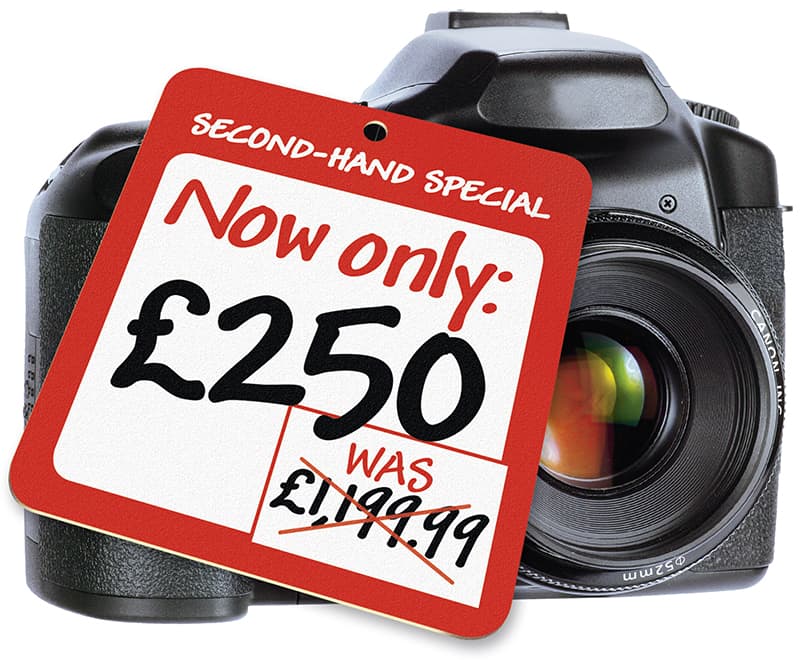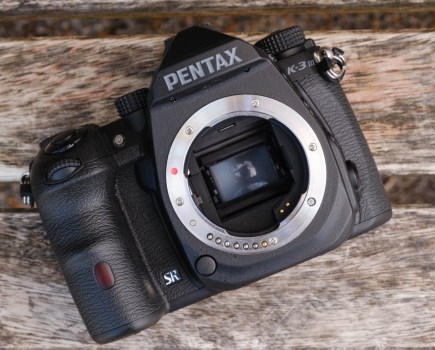With many photographers upgrading their cameras as soon as a new model is released, there is now a huge range of second-hand models available for sale. Among these are some brilliant bargains, with many cameras costing hundreds of pounds less than when they were bought new just a few years ago.
Although the latest technology found in current cameras is superb, this doesn’t mean that overnight the previous generation of cameras is suddenly rendered useless. There have been many cameras over the past few years that have become favourites with photographers because of a specific feature or the model’s image quality, and depending on your needs, hunting down the right used DSLR could get you the camera you need at a fraction of the price. Which DSLR is right for you will depend on your type of photography.
Decide what you need
What we want and what we need are two very different things. I want a 50-million-pixel, full-frame DSLR that can shoot in virtual darkness and produce almost no noise. However, my needs are a little more down to earth.
I usually print my images at A4, or occasionally at A3 size. The vast majority of my images are landscapes or travel shots taken outside in daylight. I try to shoot between ISO 100 and ISO 400, with probably 90% of my images taken in this range. I occasionally bracket to shoot an HDR sequence, so a shooting rate of 3-5fps is all I really need and a superfast AF system with lots of points isn’t really necessary.
So before you decide which camera you want, think about the features you will actually need for the type of photography you do.
What to look for
There are a few features we now take for granted that weren’t available just a few years ago. For example, many macro and landscape photographers rely on live view for pinpoint accuracy in their photographs, but some cameras more than four years old may not have this feature. Similarly, sensor cleaning was not included in some cameras until quite late in the range. The Nikon D3, for instance, lacked a sensor-shake cleaning system.
Resolution
The biggest consideration for many people when choosing a new digital camera is the resolution of the sensor. While there is a benefit in having the highest resolution possible, remember that depending on the size of the sensor, this could increase image noise. Also, ask yourself whether you will ever use the sensor to its full potential, particularly if you only ever produce small prints and display most of your images online.
As you should print at a resolution of 300 pixels per inch (ppi) for the best-quality images, the easiest way to work out the sensor resolution you will need is to consider the size of the print you will be making, in inches, and then multiply each dimension by 300 (pixels). However, this doesn’t take into consideration the distance from which the print will be viewed. Obviously, the further you are from the image, the less fine detail you will be able to see.
If you are making a large poster-sized A2, A1 or A0 print to be hung on a wall, a resolution of 150ppi or even less should be suitable. Use the 300ppi rule for image sizes up to around A4, at which size 8-10 million pixels will produce excellent image quality. To produce an A3 print at 240ppi, an 11.1-million-pixel resolution is required. By being realistic about how you use your camera and print your images, you may find that you only need a camera with a resolution of 10-14 million pixels, and there are a lot of second-hand cameras available within this range.

Infrared Conversion
 If you want to add a different feature to your camera kit, why not convert a second-hand body to infrared (Infrared Special, AP 12 May 2012)?
If you want to add a different feature to your camera kit, why not convert a second-hand body to infrared (Infrared Special, AP 12 May 2012)?
Conversion involves removing the hot-mirror filter that stops infrared light reaching the sensor, and replacing it with a filter that blocks the visible light spectrum and allows only infrared light through. You can try it yourself, but it is better to let a professional.
A typical conversion costs £200-£250, and it is usually easier to convert old cameras than current ones. One of the most popular is the 6-million-pixel Nikon D70. These can be bought for around £100, and they are one of the easiest DSLRs to convert. For around £350 you could have an infrared DSLR. Companies specialising in infrared conversion, include Protech Photographic (visit www.protechrepairs.co.uk/infrared_conversion.html).
Autofocus
 How many AF points do you really need? Although Nikon has led the way with the number of points in its cameras, many photographers will still only use the centre point and then recompose.
How many AF points do you really need? Although Nikon has led the way with the number of points in its cameras, many photographers will still only use the centre point and then recompose.
If you do this, then as few as nine points may be all you require, particularly if you shoot subjects that will usually be in the centre of the frame, such as wildlife images. Similarly, landscape photographers have time to manually focus, so the AF points may rarely be used.
Shutter Actuations
When a new camera is announced, many manufacturers will proudly boast how many shutter actuations the camera has been tested for in a shutter count. In real terms, this number is how many times you can expect to fire the shutter before it breaks. On older cameras this can be around 50,000 times, but in the past five years or so manufacturers have upped this figure to around 100,000 actuations, and many more if it is a professional-level DSLR.
 However, remember that cameras fail for many other reasons apart from the shutter dying, and many shutters can continue for long after the manufacturer’s estimated life. You can find a list of user-submitted shutter actuations for various popular DSLR cameras at www.olegkikin.com/shutterlife. For example, one user claims that his Nikon D300 had its shutter fired more than 360,000 times before it failed, which is well above the 150,000 that Nikon estimates.
However, remember that cameras fail for many other reasons apart from the shutter dying, and many shutters can continue for long after the manufacturer’s estimated life. You can find a list of user-submitted shutter actuations for various popular DSLR cameras at www.olegkikin.com/shutterlife. For example, one user claims that his Nikon D300 had its shutter fired more than 360,000 times before it failed, which is well above the 150,000 that Nikon estimates.
When buying a used DSLR, it is a good idea to check the number of times the shutter has been fired. Some people will list the number when selling the camera, but if they don’t you can find out by taking an image with the camera and uploading it to www.shutteractuations.com. The Exif data of the image will be analysed and you will be told what number image it is. Before parting with any money, decide whether the shutter has plenty of life in it for the number of images you plan to take. Generally, there shouldn’t be an issue, but if you see a camera that has taken more than 50,000 images, especially in a short space of time, then it may have been heavily used and other parts could fail.
Of course, professional-quality cameras are designed to be used heavily and often have strong Kevlar shutters to help prevent wear and damage, so you can expect these shutters to last for more than 300,000 shots.
Top tips when buying a second-hand DSLR
- Make a list of the features you really need in a camera
- Apart from the infrared conversion, it is also possible to have the
anti-aliasing filter removed, which should make images even sharper - Try to find out the number of shutter actuations of the camera
- While buying online may be cheaper, remember that you may have little
recourse should the camera fail. Most shops will offer some sort of
warranty, even on used equipment - Finally, if the price of a camera seems too good to be true, it probably is







